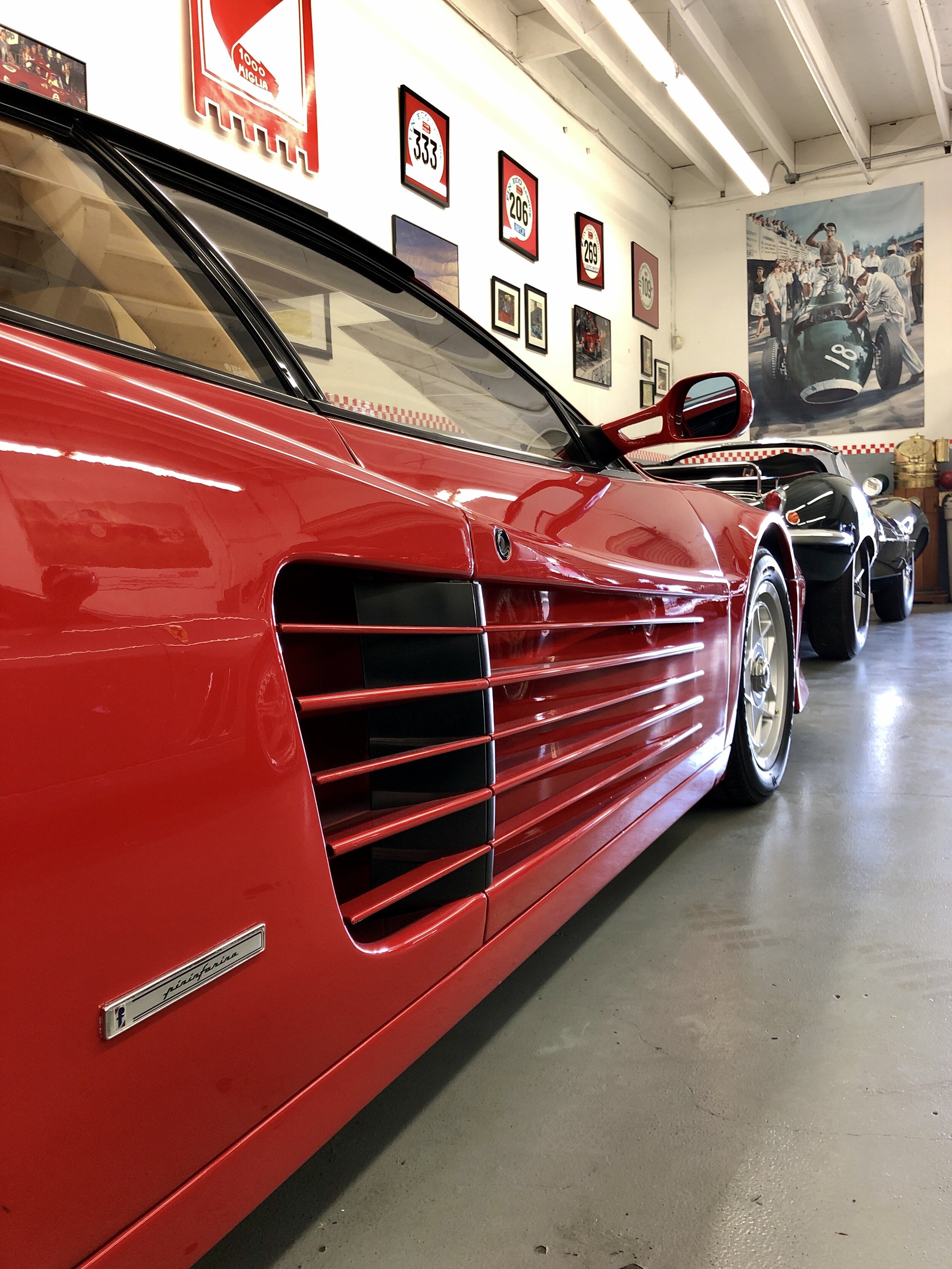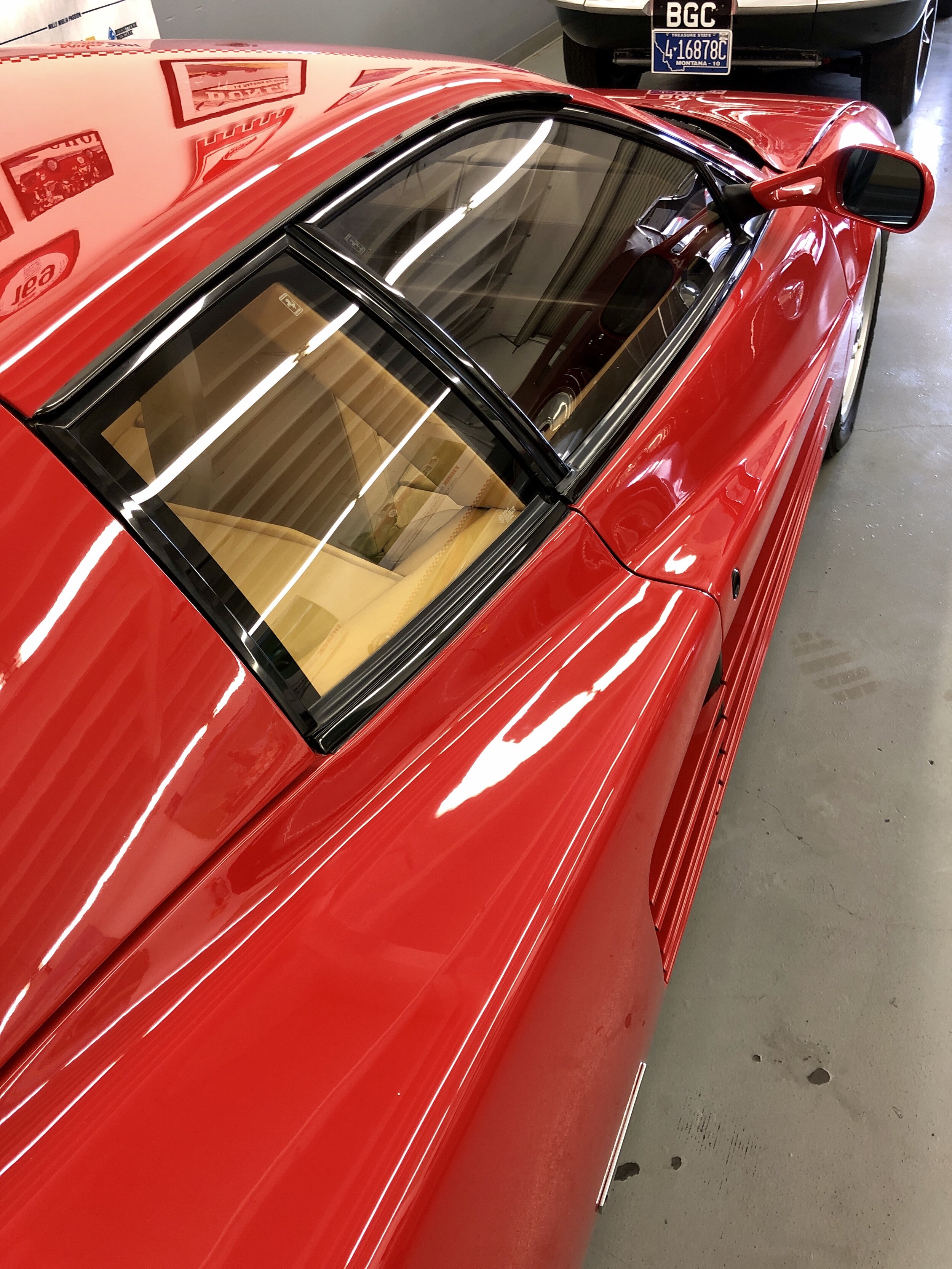Buyers Guide - Ferrari Testarossa
As it often happens, owning and driving a classic car can come with a certain degree of disappointment. For drivers used to modern vehicles, classic cars are often slow, quirky, and unreliable. They have weird handling characteristics and don’t stop or steer as expected. However, it is not the car’s fault but the owner’s, and we all fall into the trap of idealizing the cars we lusted after for so long. In our imagination, every Jaguar E-Type is a blisteringly fast machine, but the reality, an ordinary family SUV will beat it in a stoplight drag race.
Thankfully, Ferrari Testarossa is not one of those cars. Its handling characteristics, composed driving dynamics, thrilling performance, and decent equipment make it more than capable of keeping with modern traffic and still providing a lot of driving excitement at prohibited speeds. This makes most of the ‘80s cars perfect classics for everyday use. Not just because they possess adequate performance, but also because they have engines with fuel injection, disc brakes with ABS, and interiors with air conditioning. In short, well-sorted and mechanically sound ‘80s classic will give you all the thrills of driving a timeless piece of engineering but still provide you with modern amenities. Best of both worlds, really.
That is why the recent spike in Ferrari Testarossa prices shouldn’t surprise anyone. In fact, Testarossas are extremely in demand, and the prices have tripled in just a few years. That being said, the good examples are getting snapped by collectors, and even though Ferrari made quite a large number of those rear-engine GTs between 1984 and 1991, you should hurry up; before all the nice cars are bought and stashed away in climate-controlled garages, rarely to be seen.
Fortunately, at the moment, there are plenty of good Ferrari Testarossas for sale. However, as with any classic car, especially Italian exotic from the ‘80s, you need to be extremely careful. There is a fine line between a sound investment and a financial mistake, and we will keep you from crossing it.
Which one to get?
Since the Testarossa changed very little during its 7-year production run, Ferrari didn’t make any special models, desirable trim levels, or editions to look for. They all came with the same 4.9-liter, twelve-cylinder engine, and 5-speed manual. However, as with any classic car, we suggest you get the cars built later in the production cycle. The reason is simple, later examples are usually better made, better rust-protected, and with better fit and finish than the early models. This applies to all hand-assembled cars, not just Ferrari Testarossa.
What to look for?
As you probably guessed, the Testarossa you want to buy is a pampered and regularly driven example with one or couple of careful owners, clean title, complete service history from day one, and zero accidents. Do not fear high-mileage Testarossas because they are often more dependable than examples with few miles on the odometer. Regular use means regular servicing and monitoring of the overall condition of the car. That being said, we would like to see future owners drive their Testarossa and enjoy them frequently; that is why you want a fully operational vehicle, not a preserved sculpture on four wheels, which was parked when Clinton first ran for president.
Yes, it is tempting to buy a low mileage car, but in reality, cars that are rarely used tend to develop several problems due to standing. Brake pistons can seize, corrosion can appear in hard-to-reach places, dry seals and hardened gaskets, rubber hoses, rotted brake and coolant lines, and failing fuel pumps are the most common things you can expect. All of this could happen even if the car were kept climate-controlled garage. So, do not be afraid of high mileage cars as long as they are correctly serviced and pristine.
The originality is the key, especially if you considering the Ferrari Testarosa as an investment. However, in some cases, slight modifications can increase the value and usability. For example, pre-1989 models had problems with the water pump, so if the car you are looking at has the original water pump assembly, it is a disaster waiting to happen. Most owners upgraded to the improved water pump, which improves the overall dependability of the car considerably. Also, it is not common that power steering was added, and it is a welcomed addition that makes daily driving the Testarossa even more pleasurable.
Which ones to avoid?
The first rule of buying an exotic car is to stay away from damaged vehicles, cars with salvage titles, or examples with any kind of crude modifications. Testarossa was the vehicle that attracted a certain type of customers back in the day, so some cars got impounded or shoot at. Repairing or restoring Testarossa is a costly endeavor, and some spare parts, interior components aren’t available. To be honest, even if you get it for free, complete, ground-up restoration (bodywork, paint, mechanics), Testarossa might not be financially viable.
Back in the ‘80s, cunning car dealers in the US started importing less costly European examples and converting them to US-spec models. Widely known as “Grey Spec” Testarossas, these cars are less desirable due to the fact they have been, often crudely, converted by the dealer or individual ruining the original spec. For most discriminating buyers, “grey spec” models, often with pre-1988 production dates, are the ones to be avoided, even if they are in great shape with a full service history.
Lack of full-service history can be a deal-breaker since you cannot tell what has been done to the car and how often. Since maintaining the Testarossa is expensive, just like any classic Ferrari, and extensive work needed to perform regular maintenance, the car’s service file should be comprehensive and detailed. For example, a simple cam belt job requires removing the engine from the car and can cost over $15,000 in parts and labor.
Pay attention to the wheels, and the early Testarossas have race-style spline wheels. They do look cool but are often replaced, which can reduce the selling price. The spline wheels have been replaced by standard bolt-on rims in mid-1988, but it was more than just a simple wheel swap. Later cars have revised suspension parts, which means that earlier wheels on the later vehicles will result in strange handling characteristics. Also, note that OEM rims are expensive and rare items, and if the car has aftermarket wheels on it, no matter how good it looks, it will hurt the value.
How to test the car?
Classics like Testarossa must be driven to be fully appreciated and understood, which is why the test drive and thorough inspection are crucial. When checking the Testarossa, your biggest concerns are engine, bodywork, and electrical equipment (in that order), and the best way to see if the engine is ok is to start it yourself from cold. You can expect a bit of smoke right after starting, but it is normal. White smoke coming from the exhaust suggests a whole bunch of serious engine problems, and you should walk away from such cars. Always be suspicious of cars warmed up before you inspect them because sellers might try to hide starting problems.
It is no secret that Testarossas have been known to be driven overly enthusiastically by its owners, which means that more than a few had their share of bodywork repairs and repaints. We would suggest staying away from such cars, especially poorly repaired ones. The best way to see if the car had some major surgery is to check the paint thickness (it should be 4.5 mils all around) with an appropriate tool and look for welds beneath the carpeting and in the trunk. Also, a good spot to look for some residue paint is below the side vents, which are notoriously hard to paint and straightened if damaged.
Italian cars have a terrible reputation when it comes to electronics. Still, it doesn’t have to be that way if you spend time and double-check all the components that particular Testarossa is equipped with. Air conditioning, electric windows, heater, mirrors, and so on, everything should work correctly.
Also, if you are paying a top dollar for the car, be sure that you are buying the car with all the factory-provided accessories. Unique, leather-wrapped toolbox, luggage set (if ordered when the car was new), and a special spare wheel should be included with the car. Those items could be very expensive to replace, and recently, a perfectly-preserved luggage set was sold for a whopping $10,000.
What to pay
Just a few years ago, Ferrari Testarossa prices hovered around $40,000, but today, most of the presentable examples are going for over $100,000 to $160,000 on the classic car market. It is evident that collectors have realized just how fantastic this classic Ferrari is, and the price spike reflects that. Also, we have to recognize the nostalgia factor and the fact that car-crazed kids of the ‘80s with Testarossa posters on their bedroom walls are now successful businessmen, respected layers, and rich doctors who want to recreate that teenage excitement. All of this is pushing the prices up, and we believe that Testarossa will go even higher, which makes it a sound investment and one of the best classic sports cars you can buy today.
Love Ferrari’s Testarossa? So do we! That’s why our launch driving experience puts you behind the wheel of our 1987 Ferrari Testarossa for a day. Registration now open.






